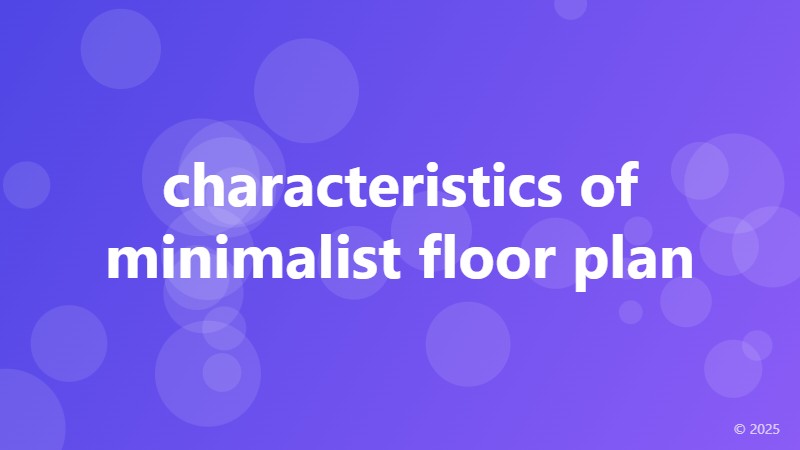characteristics of minimalist floor plan

Embracing Simplicity: The Characteristics of a Minimalist Floor Plan
A minimalist floor plan is a design approach that emphasizes simplicity, functionality, and efficiency. It's a style that has gained popularity in recent years, especially among those who value clutter-free living and a more relaxed atmosphere. But what exactly are the characteristics of a minimalist floor plan?
Simplified Layout
A minimalist floor plan is all about simplicity and functionality. The layout is often open and airy, with a focus on creating a sense of flow and continuity. This is achieved by removing unnecessary walls and barriers, creating a seamless transition between living, dining, and kitchen areas. The result is a space that feels more spacious and uncluttered.
Reduced Visual Clutter
Minimalist design is all about reducing visual clutter. This means eliminating unnecessary decorative elements, such as intricate moldings, ornate fixtures, and busy patterns. Instead, the focus is on clean lines, simple shapes, and a limited color palette. The result is a space that feels calm, serene, and easy on the eyes.
Functional Furniture
In a minimalist floor plan, furniture is chosen for its functionality rather than its aesthetic appeal. This means opting for multi-functional pieces, such as a sofa bed or a desk with built-in storage. The goal is to create a space that is both functional and efficient, with every piece serving a purpose.
Natural Light
Natural light is a key element in a minimalist floor plan. Large windows and sliding glass doors are used to bring in an abundance of natural light, reducing the need for artificial lighting and creating a sense of connection to the outdoors.
Sustainable Materials
A minimalist floor plan often incorporates sustainable materials and practices. This can include using reclaimed wood, low-VOC paints, and energy-efficient appliances. The goal is to create a space that is not only beautiful but also environmentally friendly.
Flexibility and Adaptability
A minimalist floor plan is designed to be flexible and adaptable. This means creating a space that can evolve and change over time, with minimal disruption to the existing layout. This can be achieved through the use of modular furniture, movable walls, and multi-functional spaces.
In conclusion, a minimalist floor plan is a design approach that values simplicity, functionality, and efficiency. By incorporating these key characteristics, homeowners can create a space that is not only beautiful but also sustainable, functional, and easy to maintain.